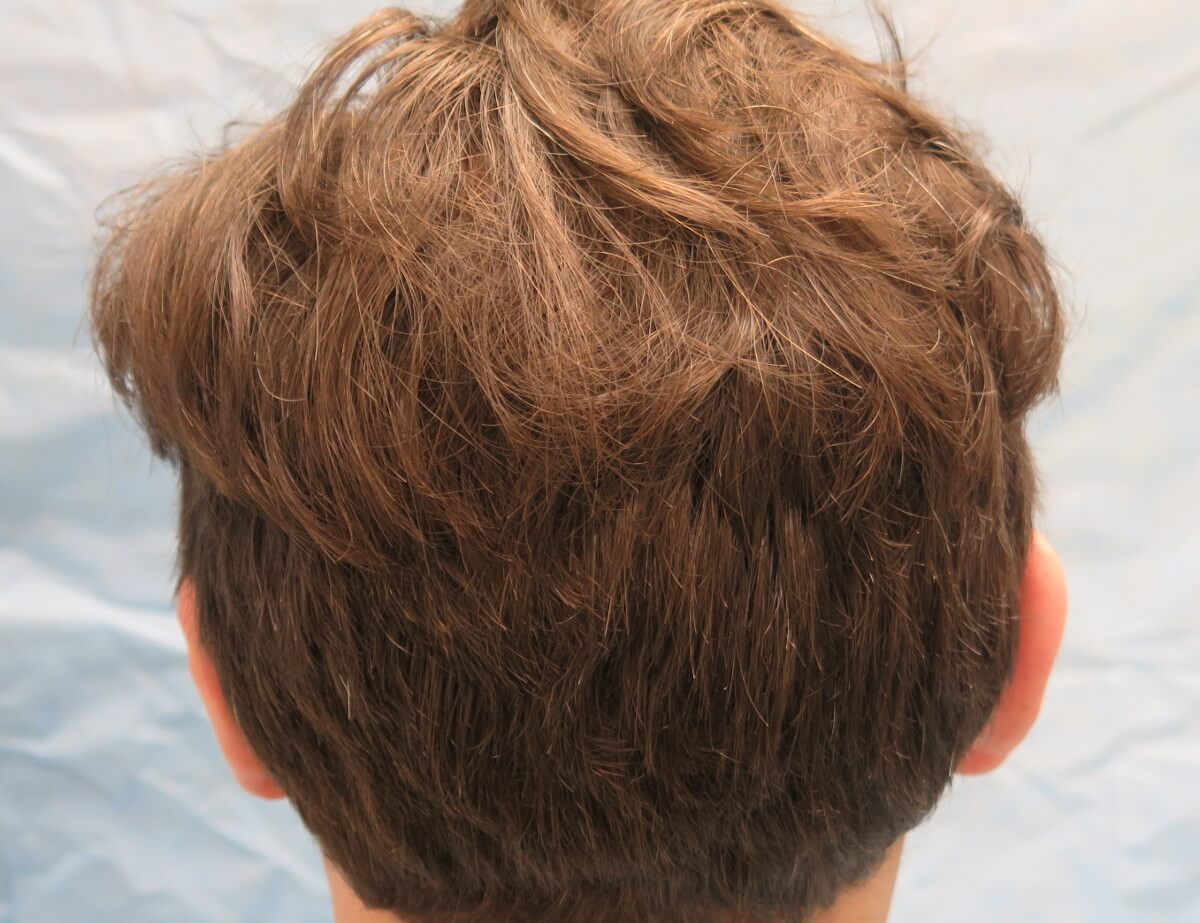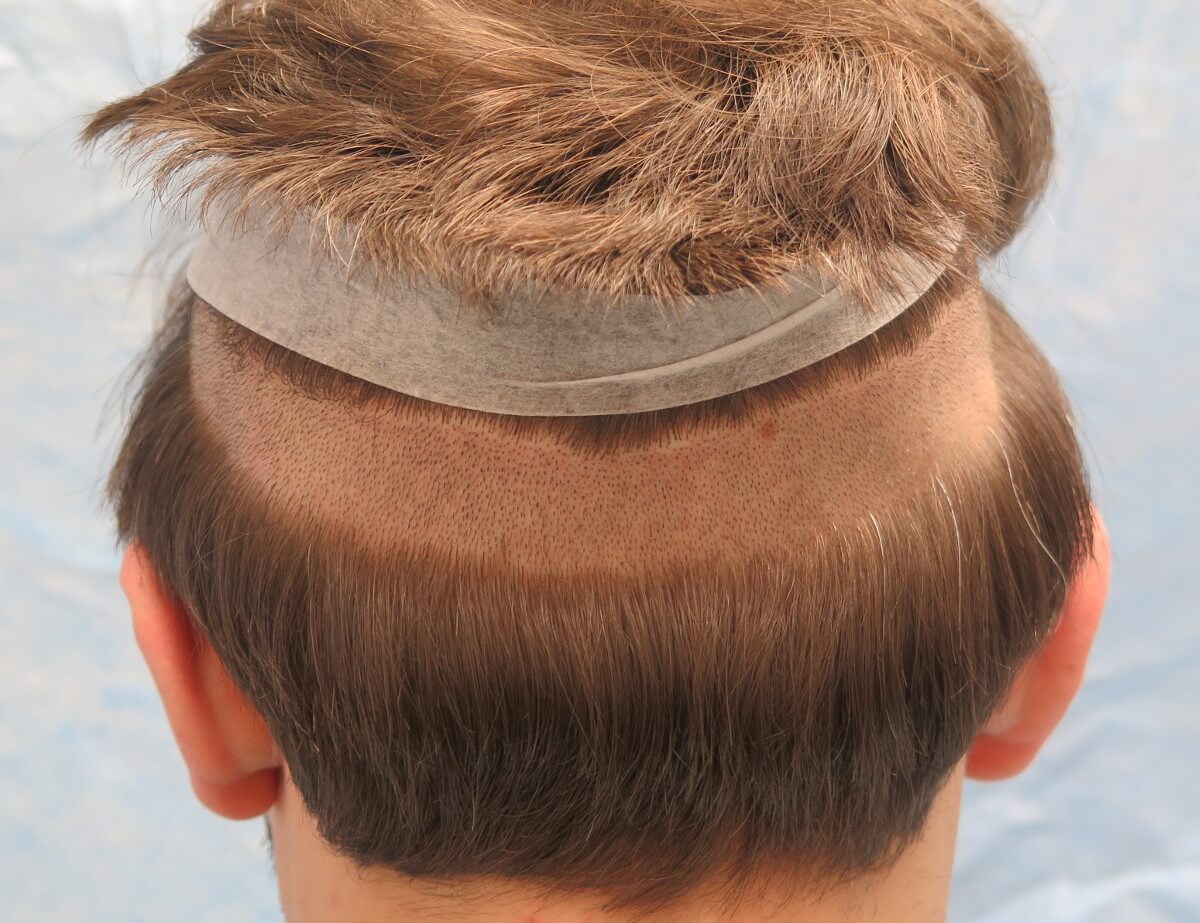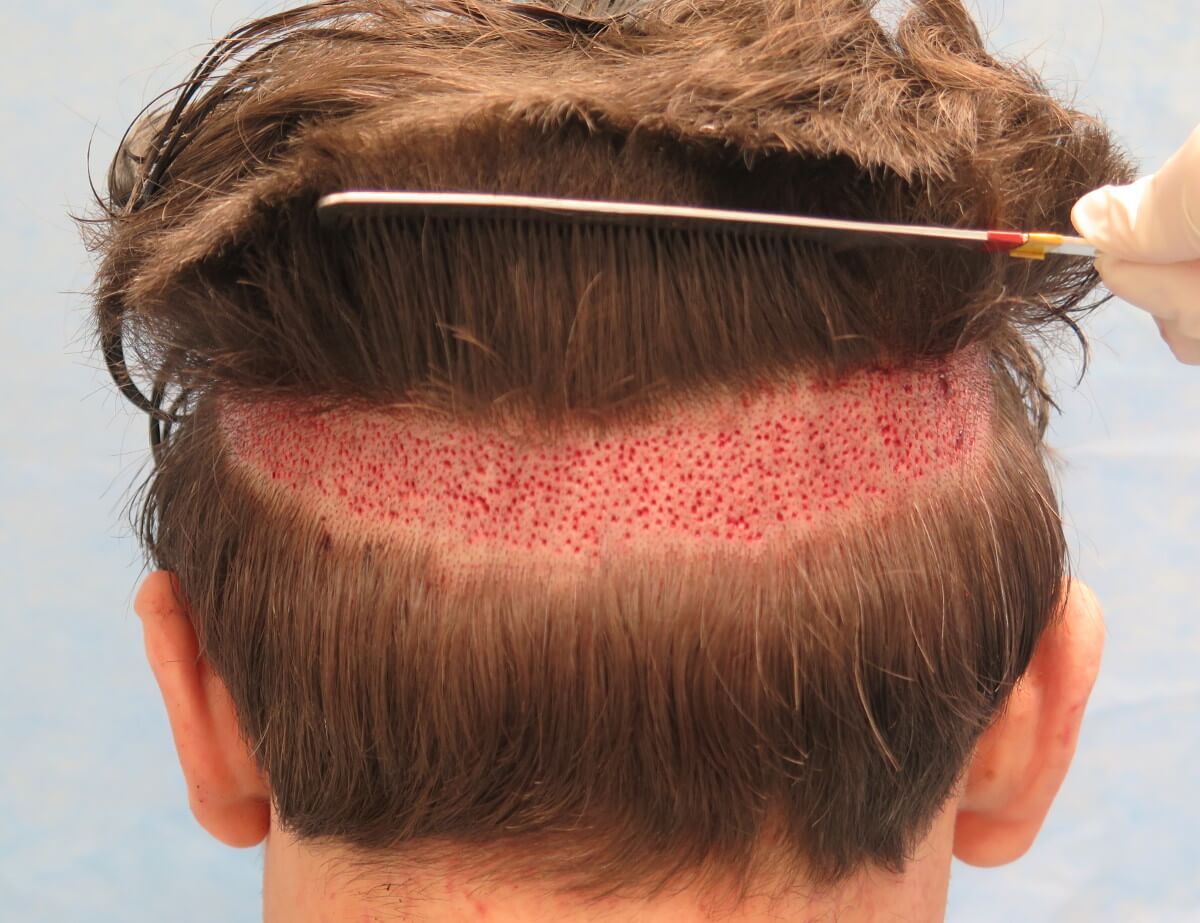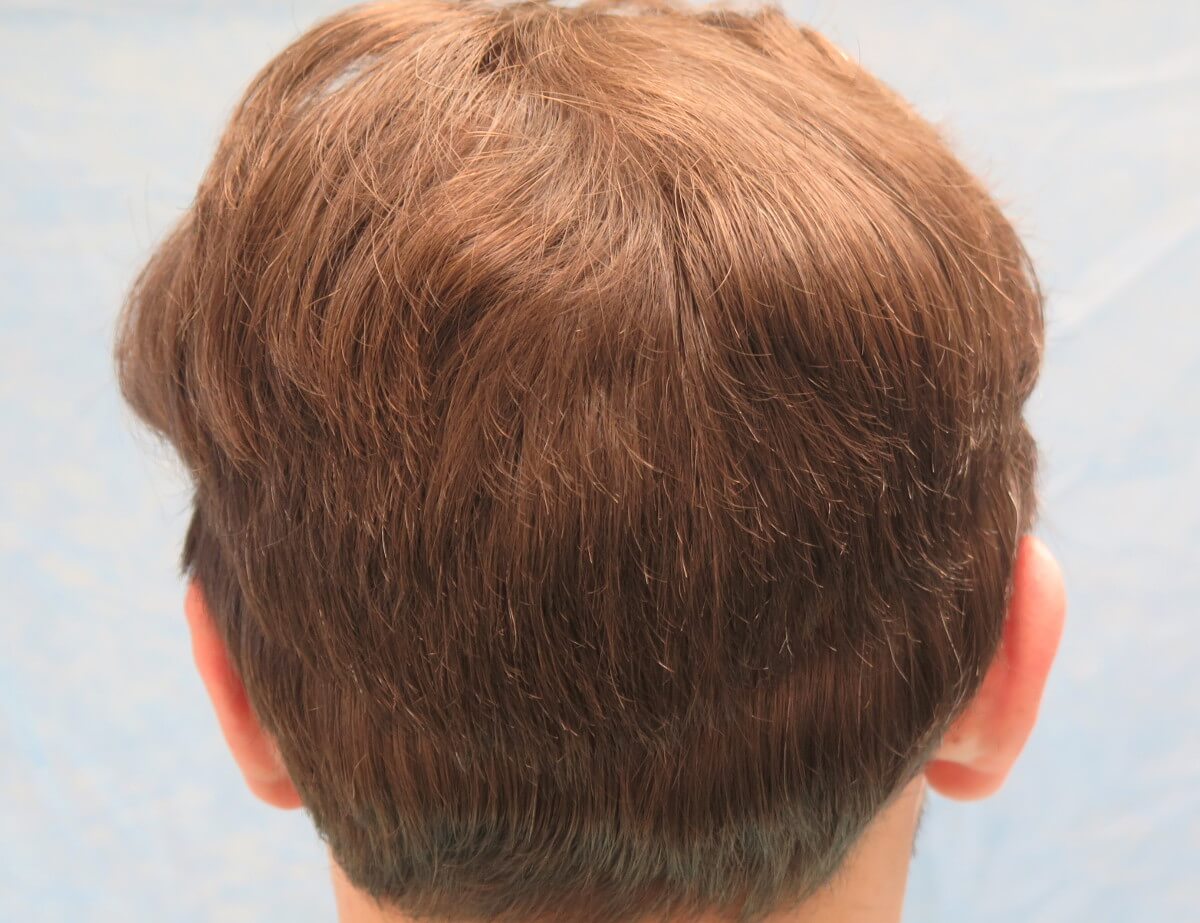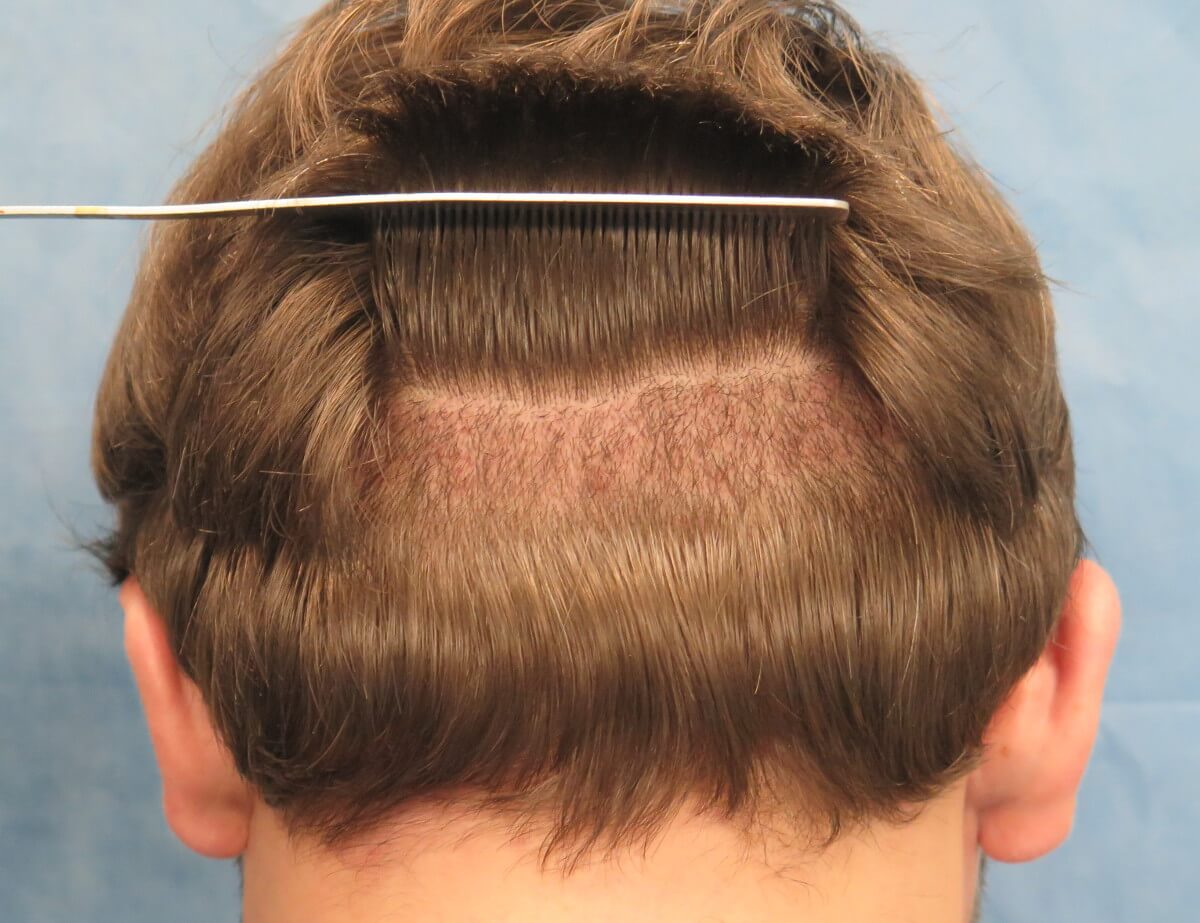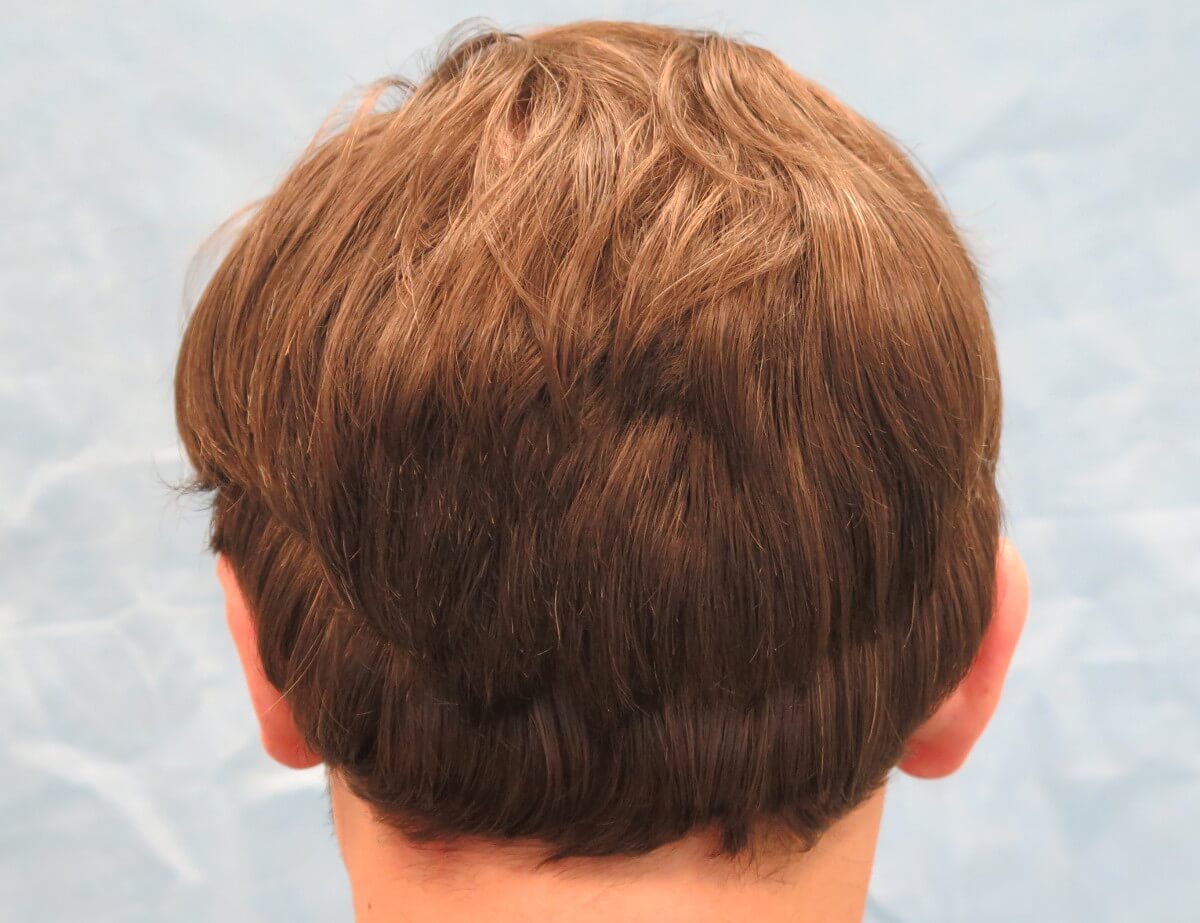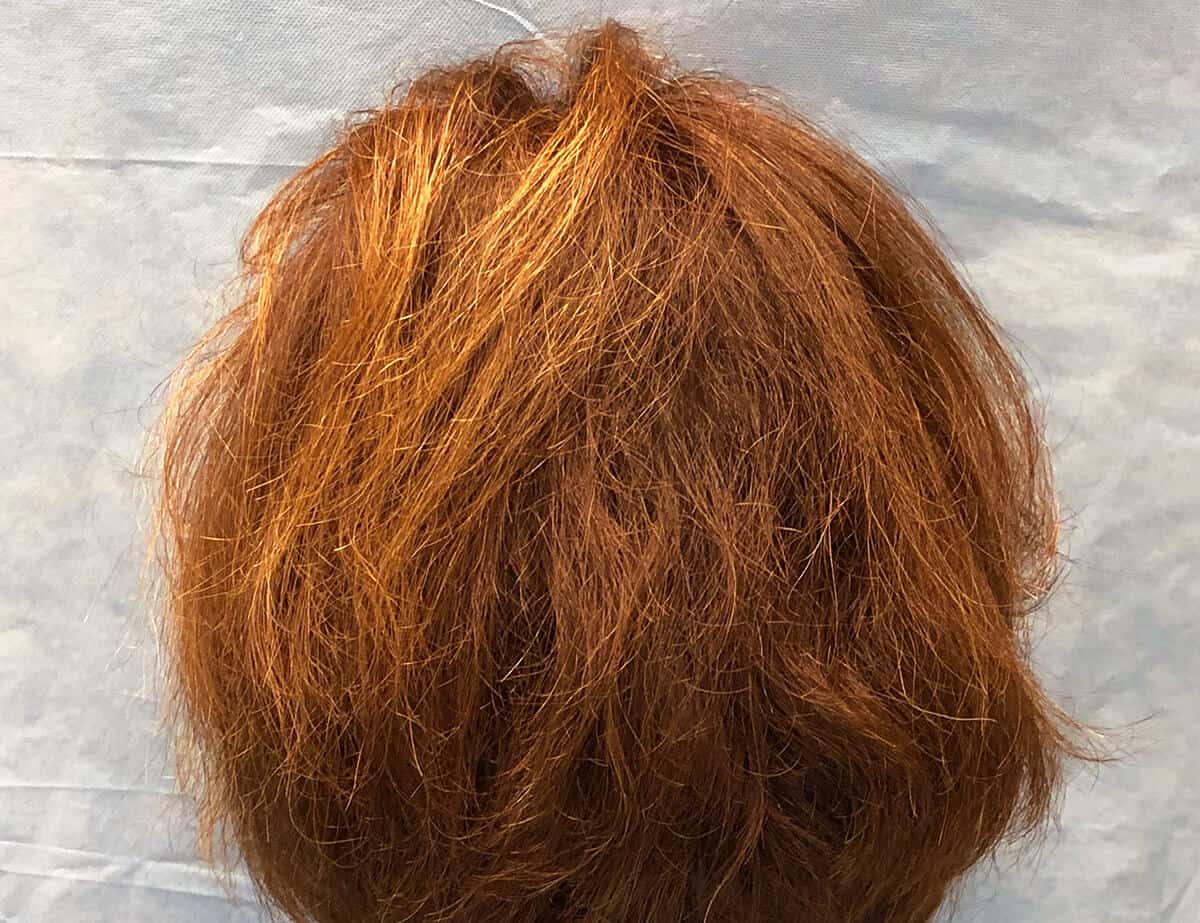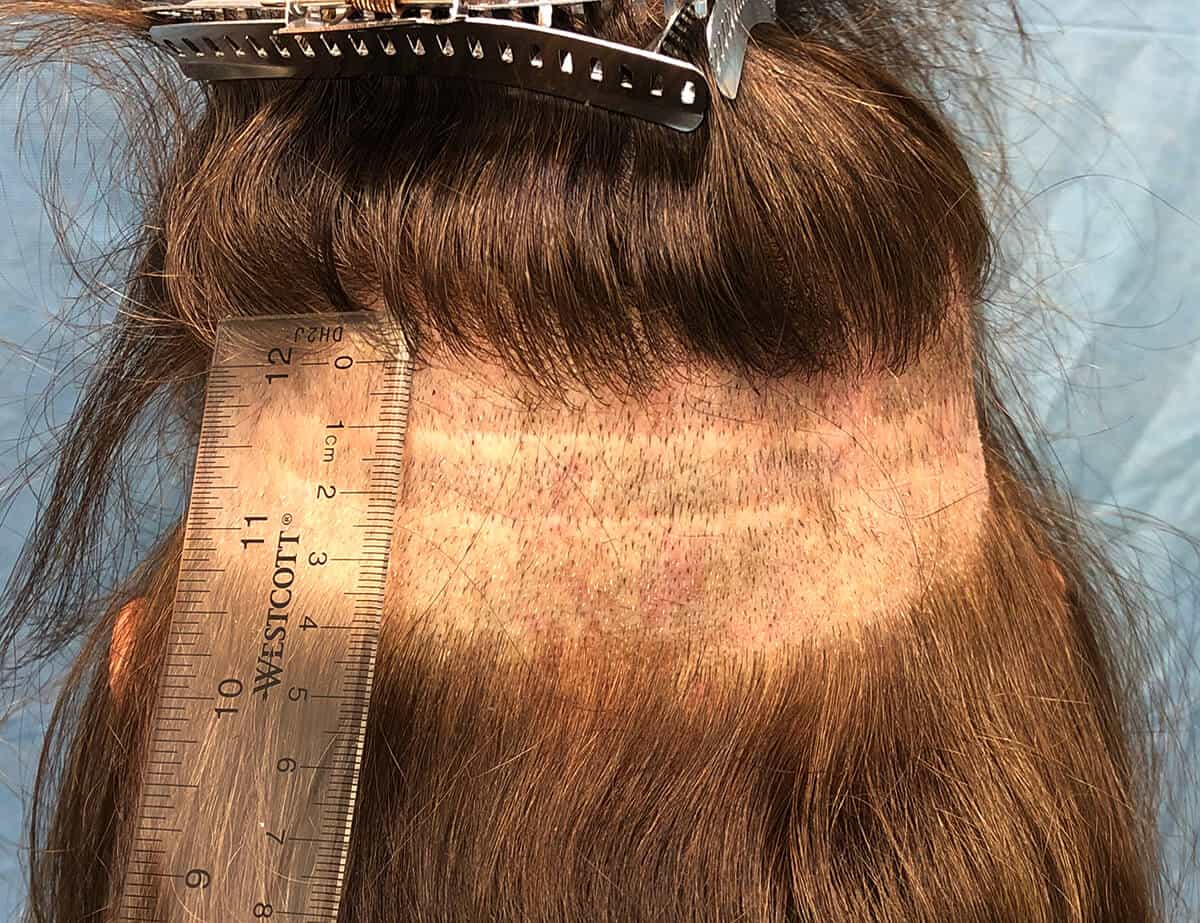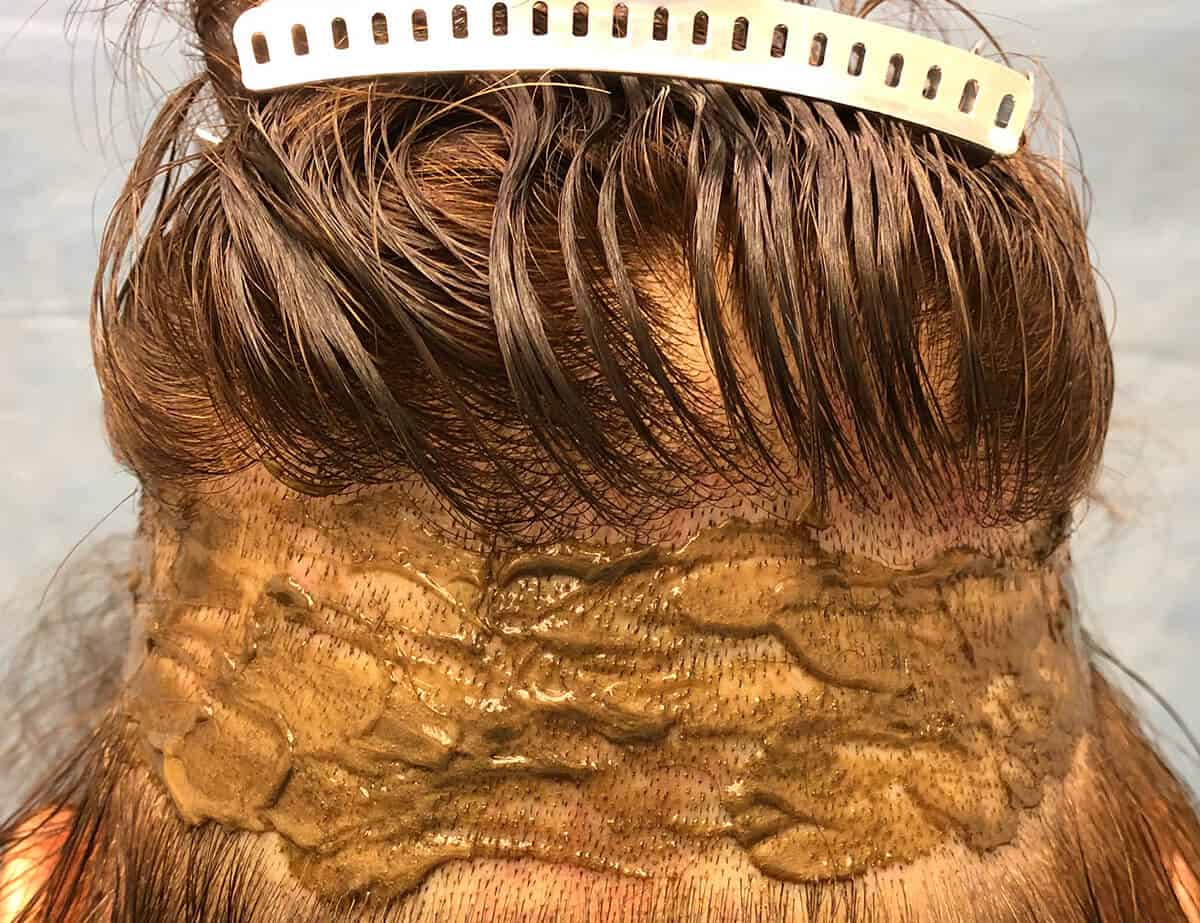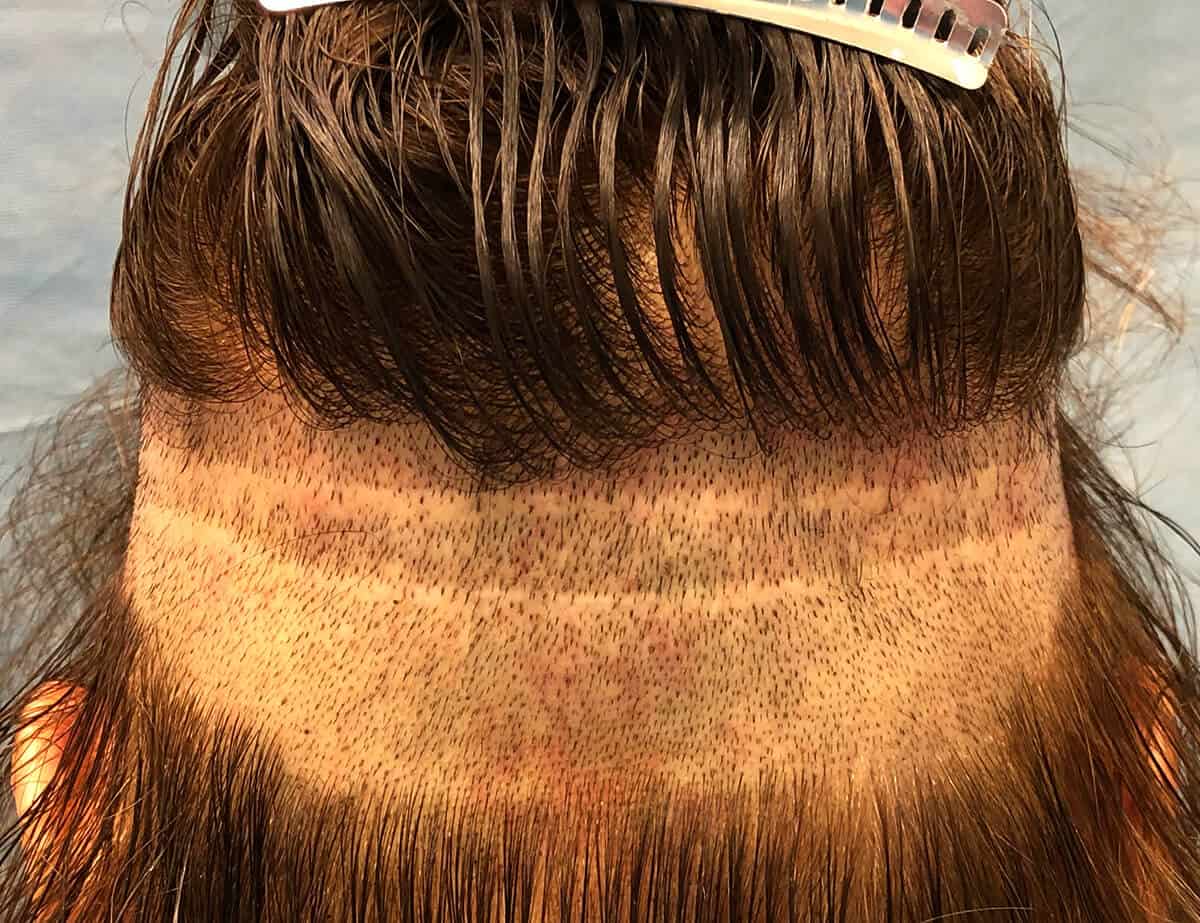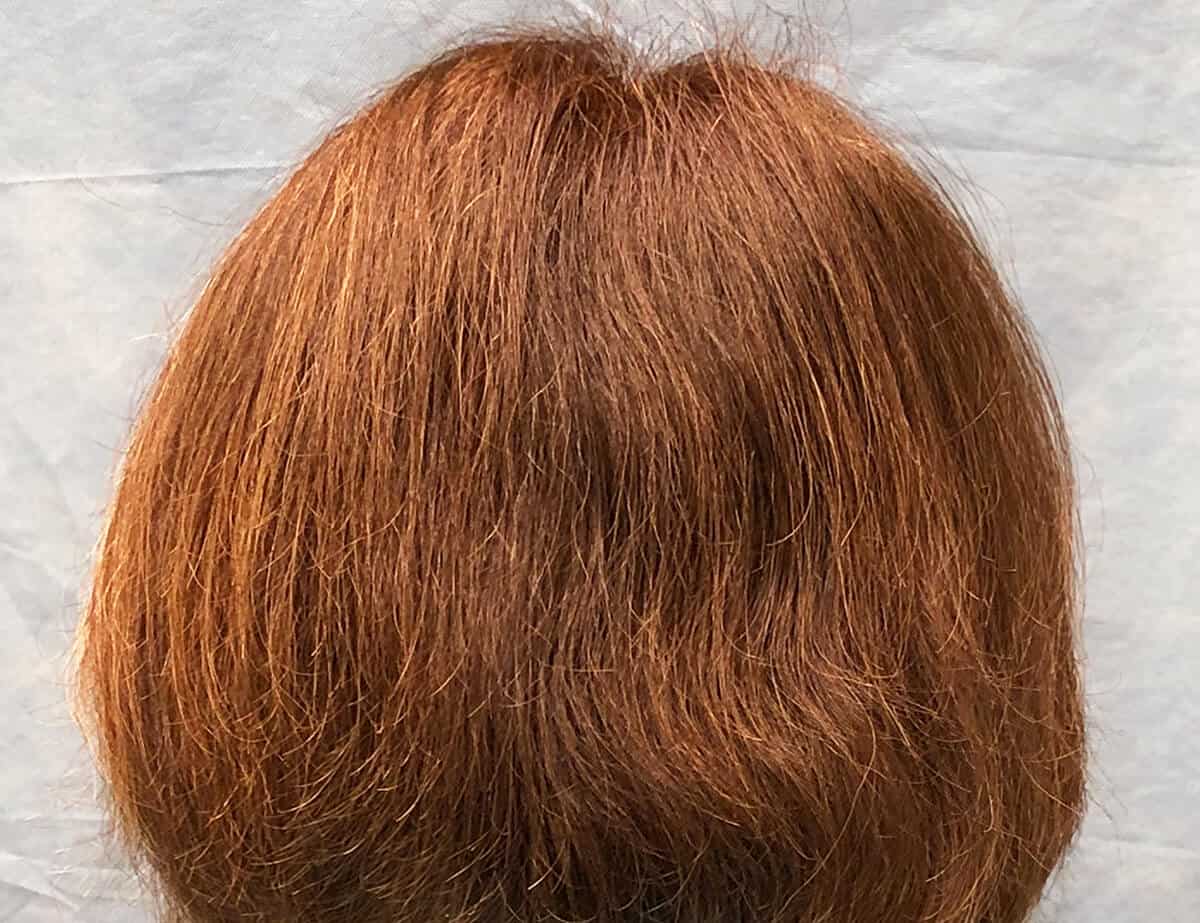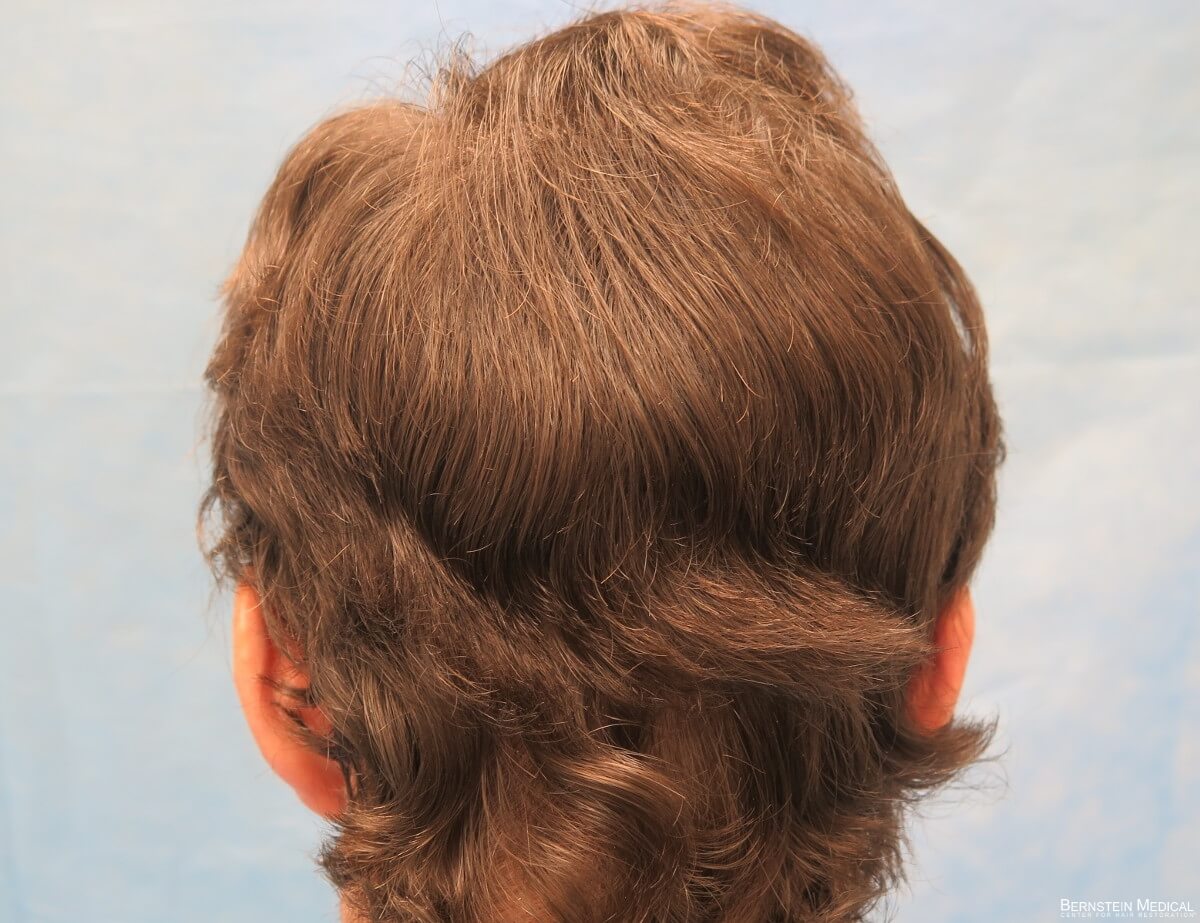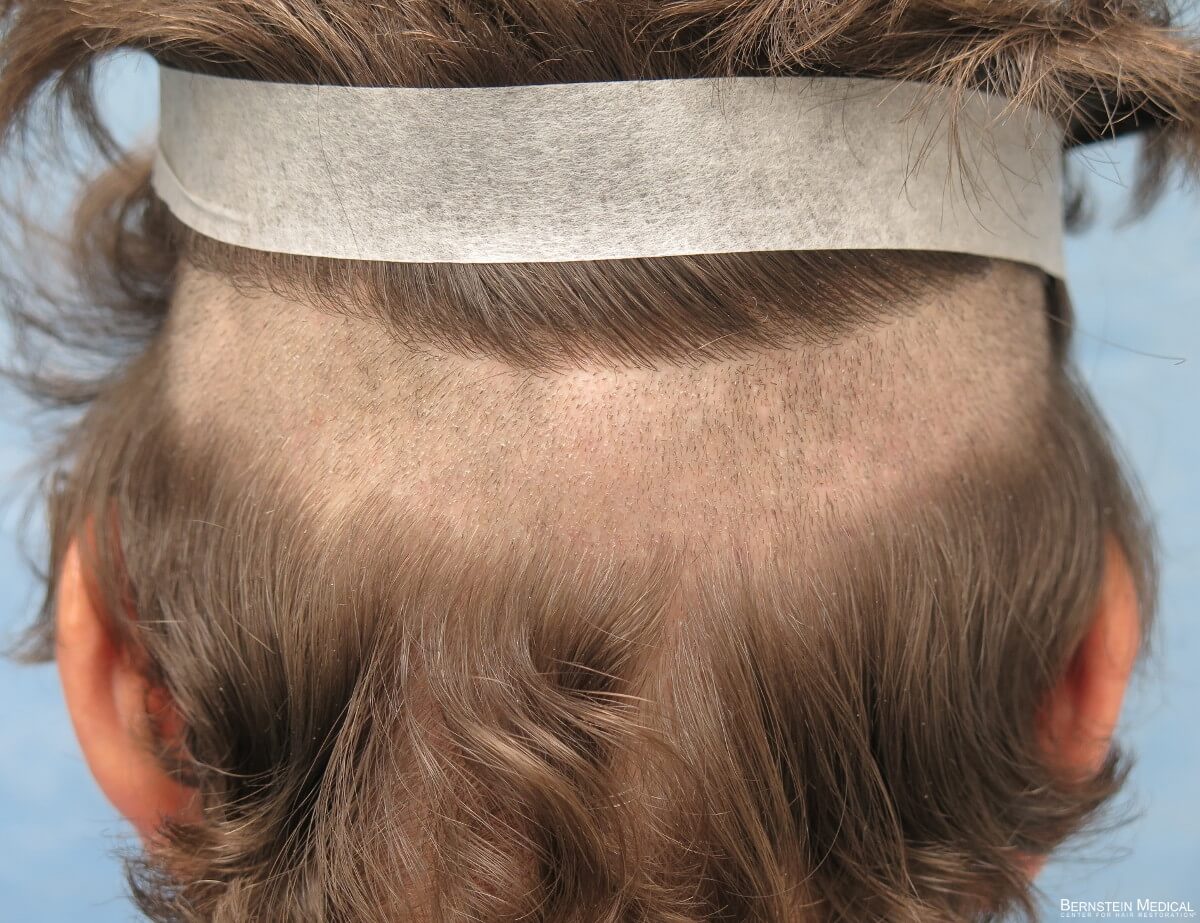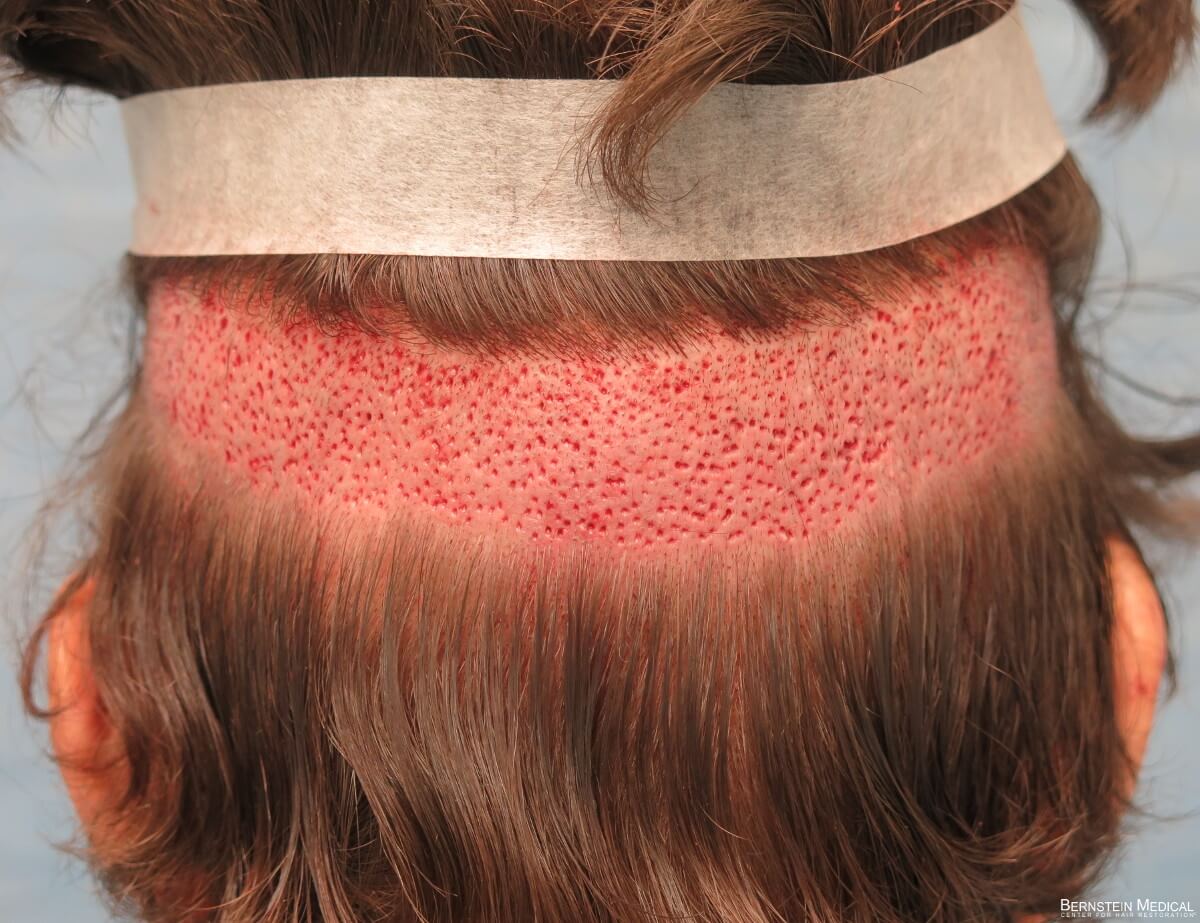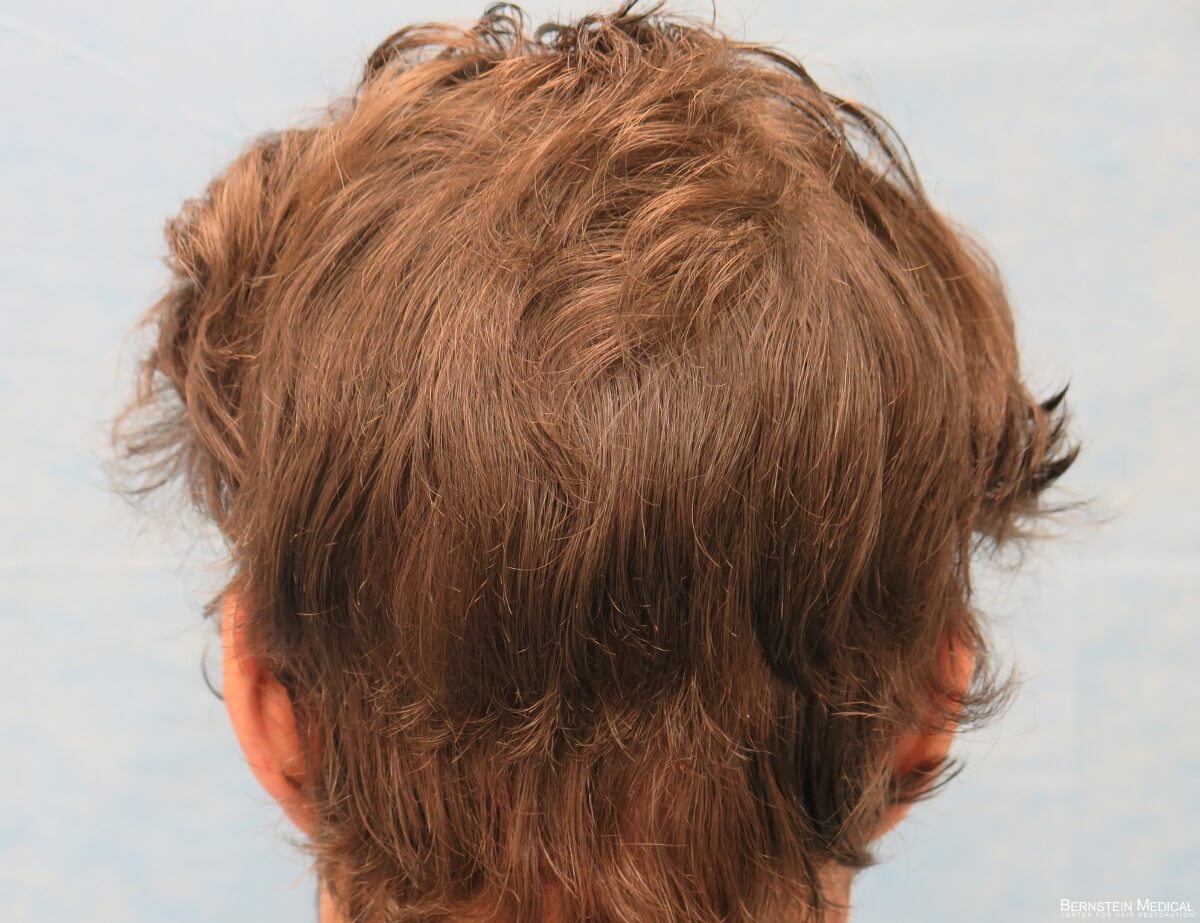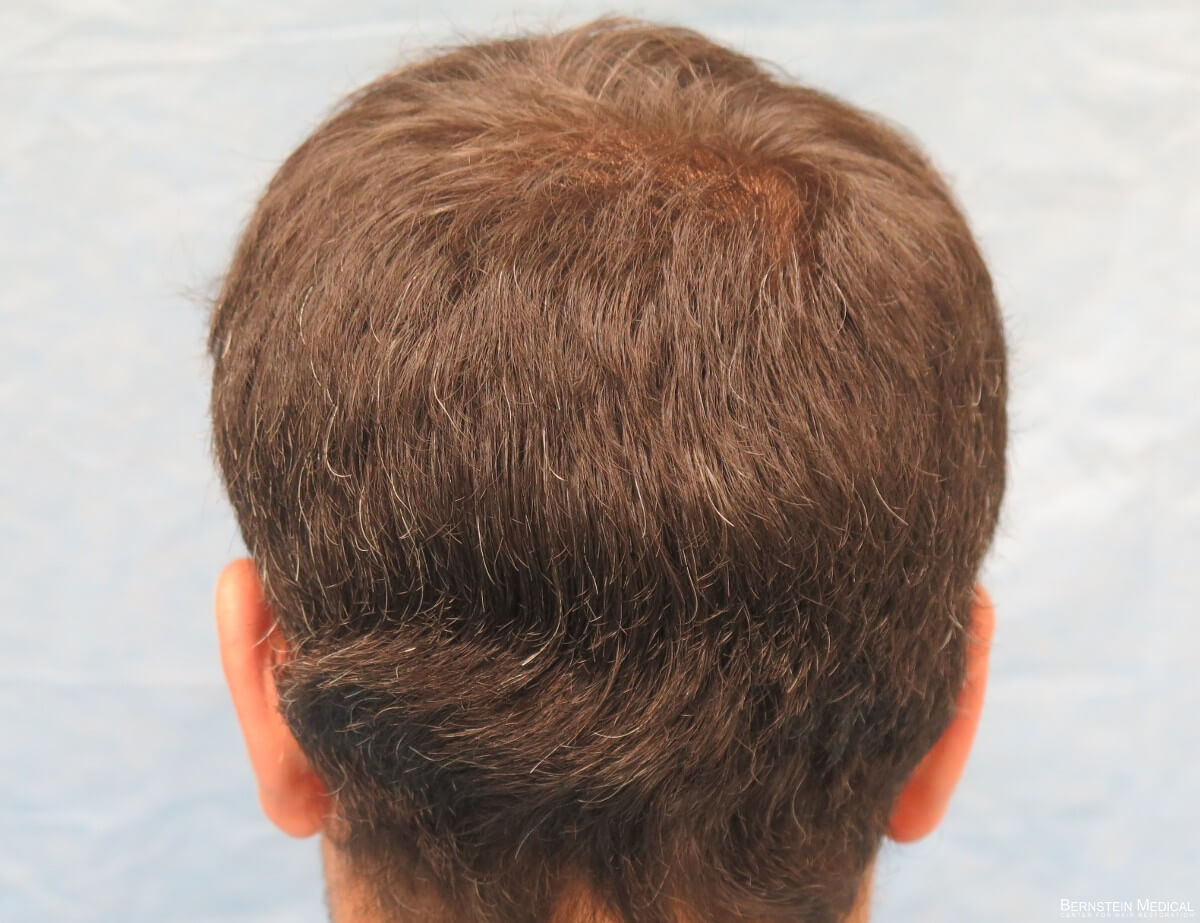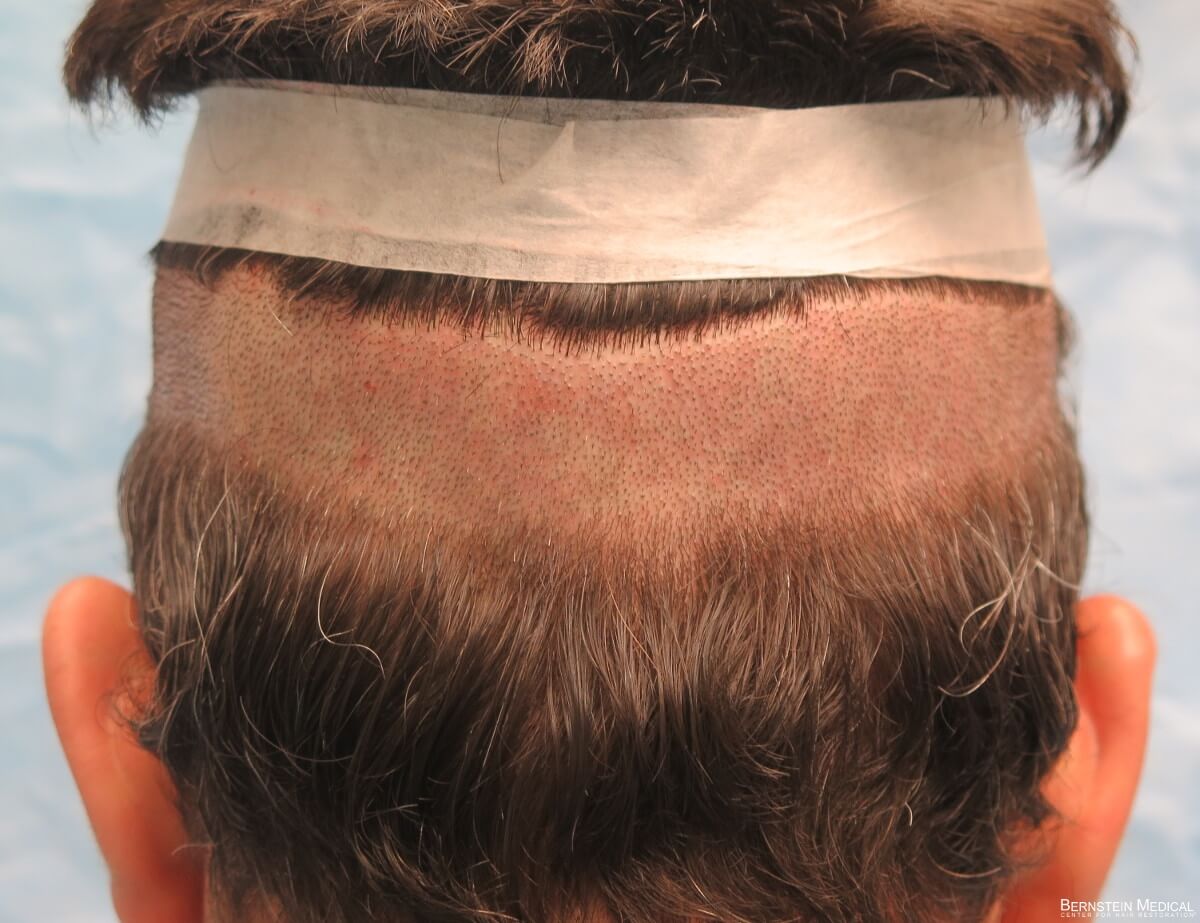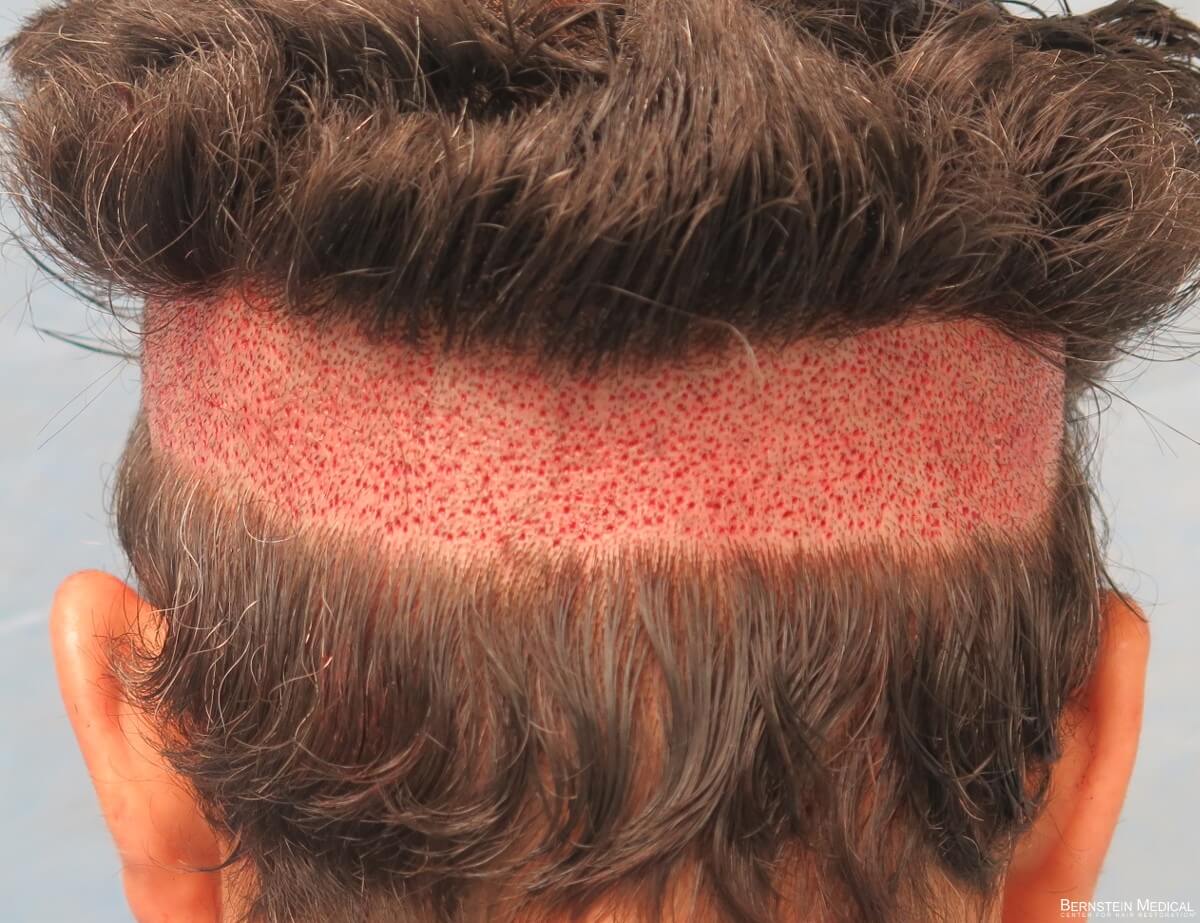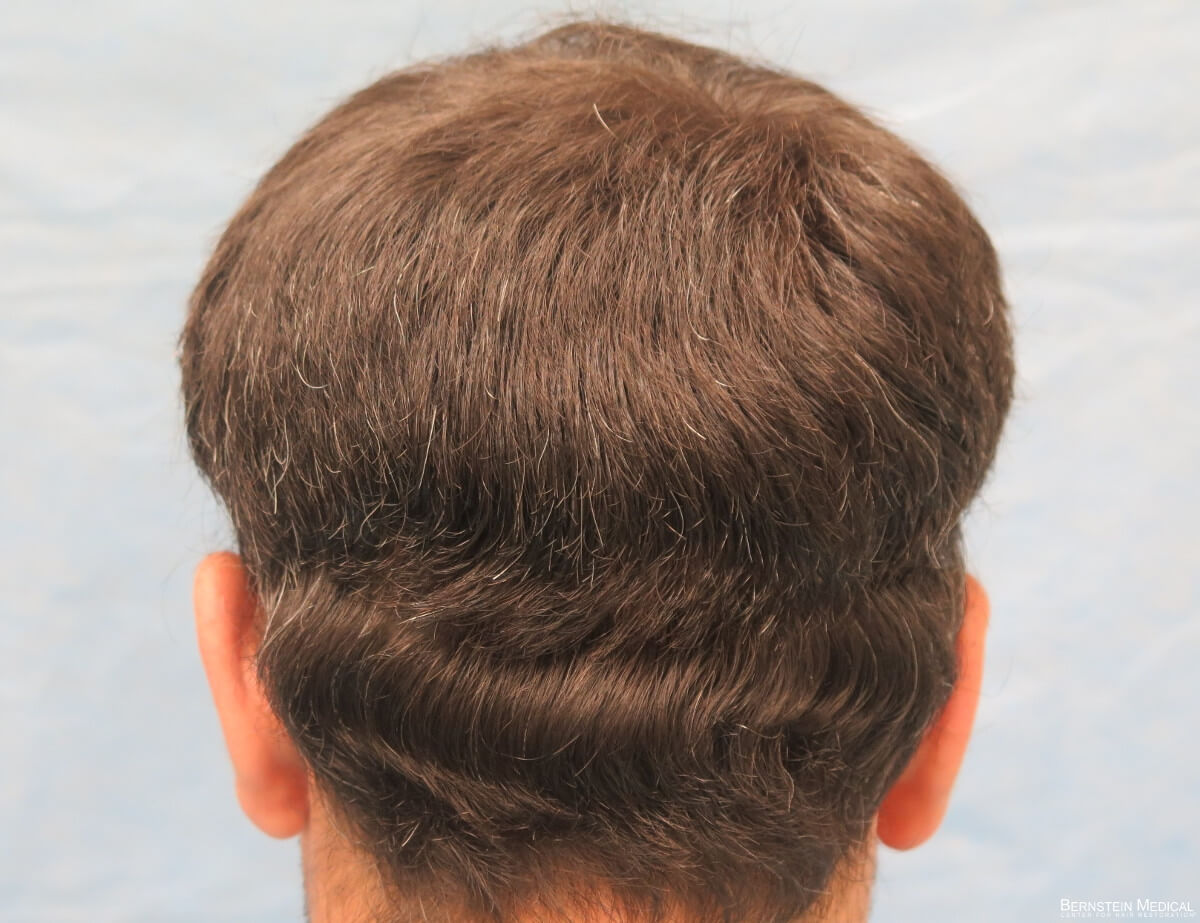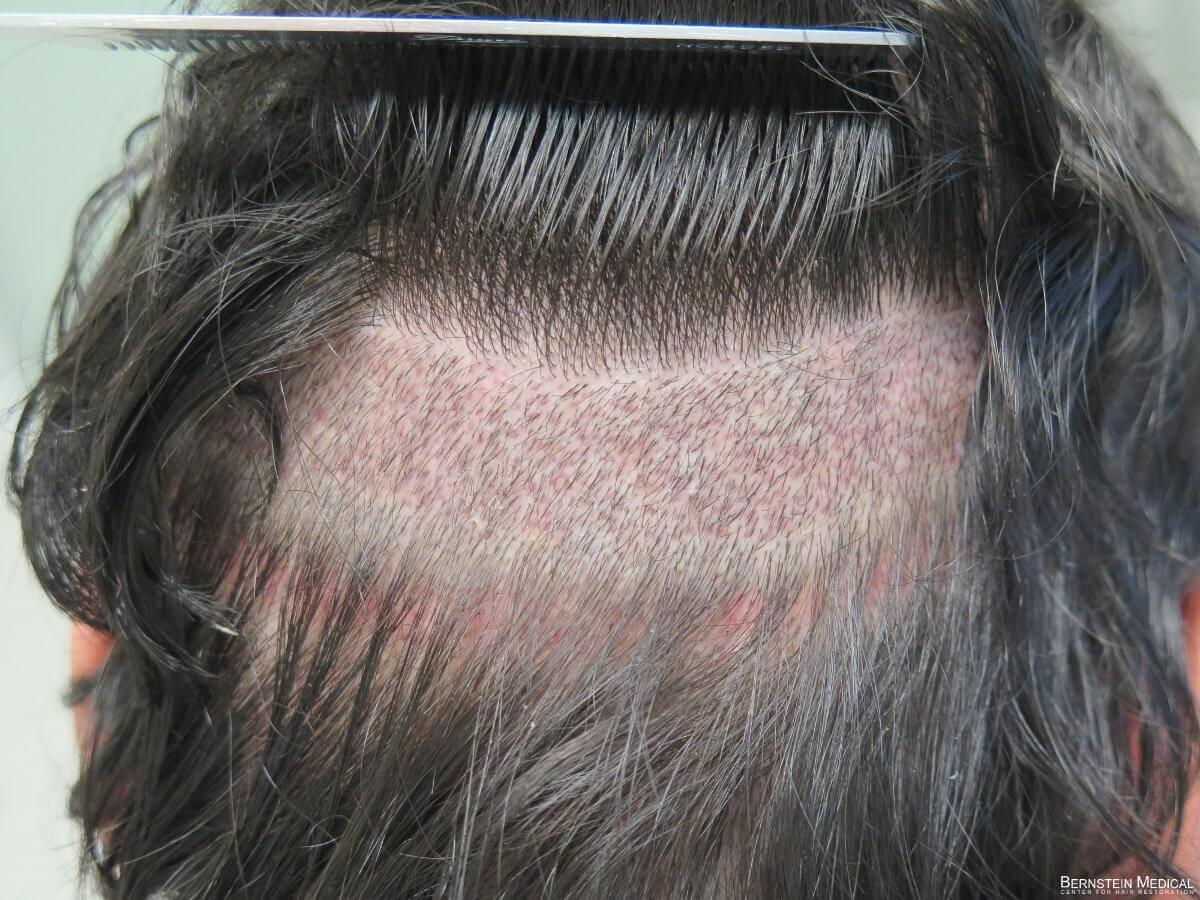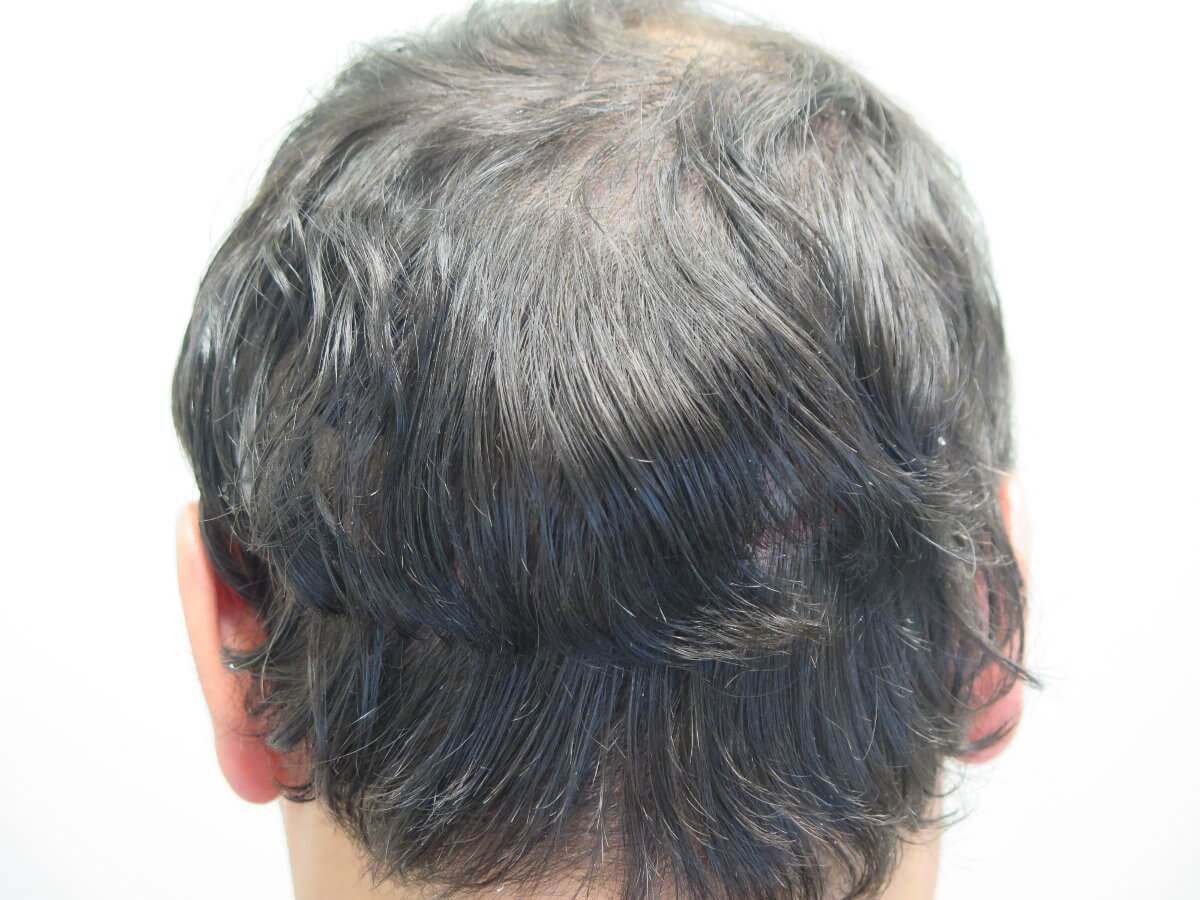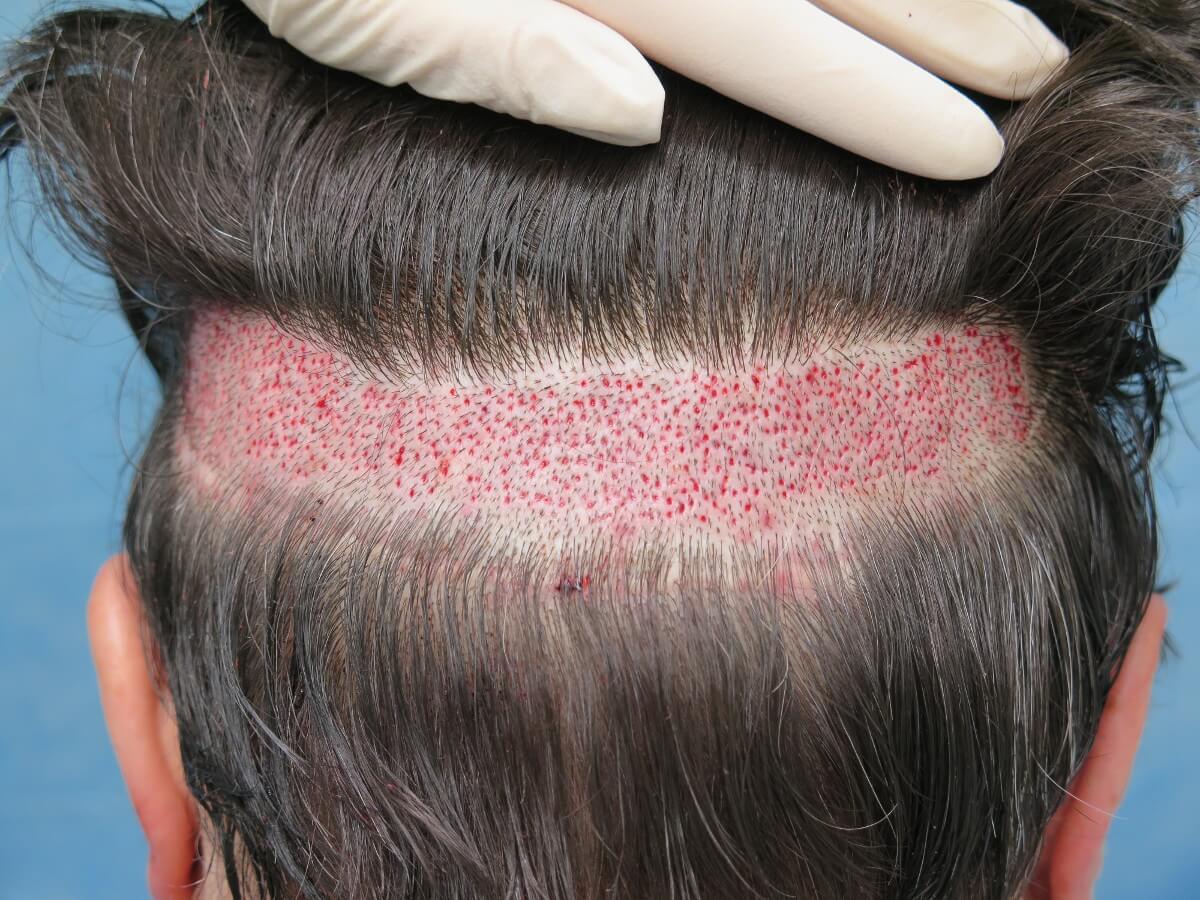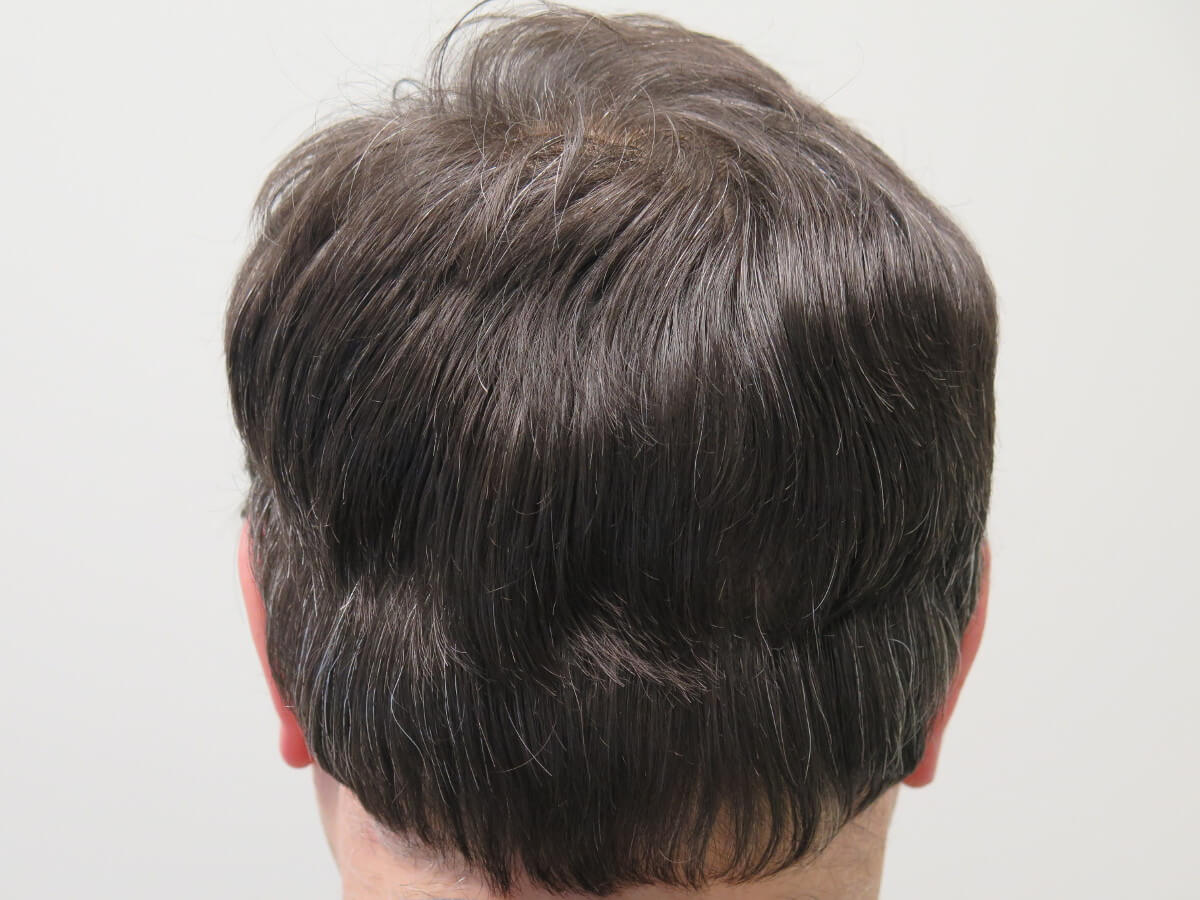In performing traditional FUE procedures, the hair in the donor area needs to be clipped close to the scalp. For ten days to two weeks post-op, the healing donor area is red and slightly crusted and may be recognizable as a hair transplant. To eliminate this short-term cosmetic problem, we have developed Long-hair Robotic FUE using the ARTAS® Robotic Hair Transplant System. With Long-hair Robotic FUE, patients can resume their work, or daily routine, soon after their hair restoration procedure.
With this technique, the patient grows his hair on the back and sides of the scalp a bit longer so it can cover the harvested area. On the day of the procedure, the surgeon lifts up the hair, clips a long thin band of donor hair, then extracts follicular units from this limited region of the scalp. After the procedure, the patient simply combs down their hair to cover the donor zone.
Long-hair Robotic FUE hair transplant procedures are generally performed through one long band or two separate parallel bands above and below a linear donor scar (see cases below). Corners are generally rounded and the edges feathered using the ARTAS system so the clipped band blends in with the surrounding hair.
The maximum number of grafts that can be harvested using this technique generally ranges from 1,400 to 1,600 grafts in a single session when one long, thin band is used. If the person’s hair is long enough, it is possible to harvest from a broader band which can potentially generate 2,400 or more grafts in a single session. The yield, of course, is dependent on the patient’s hair density, hair length, prior surgery, and physical dimensions of the permanent donor zone.
Patient CWI
Patient CWI chose to have a long-hair robotic FUE procedure since his work didn’t allow him to cut his hair short on the back and sides of his scalp. In the procedure, we harvested 1,108 follicular unit grafts from a 1-inch high band that extended around the back and sides of his scalp. When his hair is combed down over the area, it is easily camouflaged. At two weeks post-op, the donor area is completely healed and the hair has grown in a bit, so the patient may choose to have a fade, or short, haircut instead of keeping his hair long.
Paitent MPV
Like many women, Patient MVP likes to wear her hair long. The Long-Hair Robotic FUE procedure has allowed women and men to leave their hair long for the procedure, only having a small band of hair in the donor area shaved providing immediate camouflage. Patient MVP had two FUT/strip procedures, one in 2010 and the second in 2012. In 2019, she returned for a third procedure using the ARTAS Robotic System.
Video Demonstrating the preparation for a Long Hair Robotic FUE Procedure
Patient EIK
Patient EIK had a prior FUE procedure at another clinic and just wanted to strengthen his hairline. He only needed about 750 follicular unit grafts. Because of his job, he could not cut his hair too short, so he chose Long-hair Robotic FUE.
Patient BMQ
In Patient BMQ (above) we used the ARTAS Robotic System to harvest 1,575 follicular unit grafts to restore his frontal hairline and add more fullness to the front part of his scalp. Due to the patient’s work, he was unable to cut the back and sides of his scalp short. Because of this we chose to use the Long-hair Robotic FUE technique.
Patient LAC
Patient LAC had a two prior hair transplant procedures where the grafts were harvested through a donor strip (FUT-Strip). Because the strip procedures resulted in a widened donor scar, he chose to have a third session using robotic Follicular Unit Extraction with the ARTAS System (R-FUE). The main concern was that the donor area would not be detectable after the procedure.
For the procedure, he grew his hair a bit longer. At the time of the procedure, we lifted up his hair and clipped a band of hair that served as the donor site. After a robotic FUE procedure of 1,086 grafts, he simply combed his hair down to camouflage the area until his shaved hair grew back. The follow-up photo was taken one week after his procedure.
In general, with the ARTAS Robot, we can harvest up to 1,600 grafts in a single session through a long thin band of clipped hair that is easily camouflaged with longer hair immediately after the procedure, although this will vary on the patient’s hair density and the length of their hair.
Patient AEL
Patient AEL had two prior strip hair transplant procedures five and ten years ago. Because his scalp was tight, he chose to have his most recent session using FUE. In addition to his strip scar, he had other scars from cranial surgery and did not want to shave his head for the FUE procedure. He chose to grow his hair longer and then have a robotic FUE procedure with 1,114 grafts being taken through a long, thin band that was easily covered with his hair.


